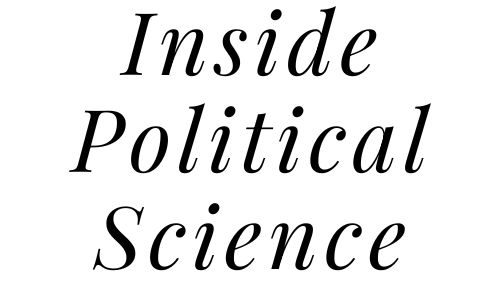
There is no question that political advertising plays a pivotal role in shaping public opinion and influencing electoral outcomes and political campaigns utilize various techniques to sway voters’ perceptions and garner support for their candidates.
This article explores ten common political advertising techniques employed in modern politics, shedding light on their significance and impact on democratic processes. From emotional appeals to repetition, each method serves a distinct purpose in the realm of political communication.
Let’s dive in!
10 Political Advertising Techniques Used in Modern Politics
Political advertising comes with advantages and disadvantages. It can often be a double-edged sword but the effects of political advertising on voters is undisputed. And so political advertising is here to stay.
Here are the 10 most common political advertising techniques used in modern politics to target a highly divided electorate:
#1. Emotional Appeal
Emotional appeal is a potent technique used to evoke strong feelings in voters, often bypassing rational thought. Political ads leverage emotions such as fear, hope, anger, or empathy to establish a connection with the audience. By tapping into these emotions, advertisers aim to influence voter behavior and decision-making processes. For instance, a campaign ad highlighting the struggles of working-class families may evoke empathy and resonate with voters facing similar challenges.
#2. Name Calling
Name calling involves using derogatory language or labels to discredit opponents and undermine their credibility. Instead of focusing on policy differences, ads employing this technique resort to personal attacks and character assassination. By associating negative traits or labels with an opponent, advertisers seek to tarnish their reputation and sway public opinion. For example, a political ad might refer to an opponent as “corrupt” or “untrustworthy” to sow doubt in the minds of voters.
#3. Bandwagon Effect
The bandwagon effect exploits the psychological phenomenon where individuals tend to align their beliefs and behaviors with the majority. Political ads employing this technique create a sense of momentum or inevitability around a candidate or cause, implying that everyone is supporting it, and thus, viewers should too. By appealing to the human desire to belong and conform, these ads aim to persuade undecided voters to join the perceived winning side. For instance, a campaign ad might tout a candidate as “the people’s choice” or highlight endorsements from influential figures to create a sense of popularity and momentum.
#4. Testimonials
Testimonials feature endorsements or testimonials from individuals who support a candidate or cause. These endorsements could come from celebrities, experts, or ordinary citizens, aiming to lend credibility and authority to the message. By showcasing positive experiences or opinions, political ads seek to persuade viewers that the endorsed candidate is trustworthy and capable. For example, a campaign ad might feature a testimonial from a respected community leader praising the candidate’s leadership qualities or policy proposals.
#5. Transfer
Transfer is a technique that seeks to transfer the positive attributes or emotions associated with one entity to another. In political advertising, this often involves associating a candidate with symbols, images, or ideas that evoke strong emotions or positive connotations. By linking the candidate to these elements, advertisers aim to transfer the goodwill or positive feelings onto the candidate. For example, a campaign ad might feature imagery of the American flag or patriotic symbols alongside the candidate to evoke feelings of patriotism and loyalty.
#6. Glittering Generalities
Glittering generalities involve using vague and emotionally appealing words or phrases to evoke positive feelings without providing substantive information or evidence. Political ads employing this technique often use buzzwords such as “freedom,” “equality,” or “justice” to resonate with voters without specifying how these ideals will be achieved. By appealing to abstract concepts and values, advertisers aim to create a positive impression of the candidate or cause. For example, a campaign ad might promise to “restore America’s greatness,” tapping into patriotic sentiments without outlining specific policies or plans.
#7. Fear Mongering
Fear mongering is a technique that exploits people’s anxieties and insecurities to manipulate their emotions and behavior. Political ads using fear mongering often depict exaggerated threats or dangers, portraying the opponent or their policies as existential threats to society. By instilling fear in voters, advertisers seek to rally support for their candidate or cause by positioning them as the only solution to the perceived threat. For example, a campaign ad might warn of the dire consequences of electing the opponent, painting a bleak picture of the future under their leadership.
#8. Card Stacking
Card stacking is a propaganda technique that involves selectively presenting information or arguments to support a particular point of view while ignoring or downplaying contradictory evidence. In political advertising, this often manifests as cherry-picking statistics, omitting relevant context, or presenting one-sided narratives to manipulate public perception. By skewing the presentation of information, advertisers seek to sway opinion in favor of their candidate or cause while discrediting opposing viewpoints. For example, a campaign ad might highlight positive economic indicators while ignoring negative aspects of the candidate’s record on job creation or income inequality.
#9. Plain Folks Appeal
The plain folks appeal is a technique that seeks to portray the candidate as an ordinary person with whom the average voter can relate. Political ads using this technique often showcase the candidate engaging in everyday activities or interacting with ordinary citizens to project an image of authenticity and humility. By presenting the candidate as a “regular guy” or “girl next door,” advertisers aim to foster a sense of trust and connection with voters. For example, a campaign ad might feature the candidate having a casual conversation at a local diner or playing with their children in the backyard to convey a sense of relatability.
#10. Repetition
Repetition is a simple but effective technique that involves repeating a message, slogan, or image multiple times to reinforce its importance and memorability. Political ads using repetition often feature consistent messaging and imagery throughout the campaign to ensure that the desired message sticks in the minds of voters. By hammering home key themes or talking points, advertisers aim to create familiarity and association with the candidate or cause. For example, a campaign ad might repeatedly emphasize a candidate’s catchphrase or slogan to ensure that it becomes ingrained in the public consciousness.
Closing Thoughts
Political advertising serves as a powerful tool for shaping public opinion and influencing electoral outcomes in modern politics. By employing a diverse array of techniques such as emotional appeal, name calling, and repetition, campaigns seek to sway voters’ perceptions and gain a competitive edge. However, as citizens, it is imperative to approach political ads with a critical eye, discerning fact from manipulation. Understanding these techniques allows us to engage in informed discourse and hold political actors accountable. As we navigate the complex landscape of political advertising, let us remain vigilant and uphold the principles of democracy through informed decision-making and active participation.
